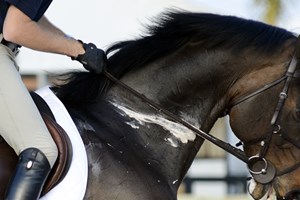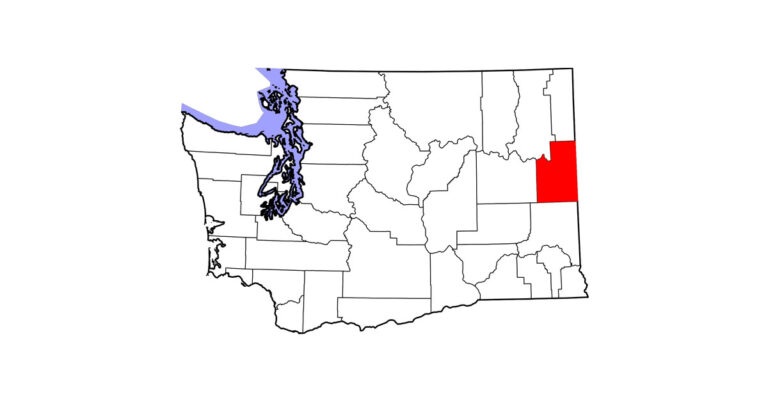It’s a steamy summer afternoon and you set out on a trail ride with a friend. After half an hour her horse is drenched with sweat, but your horse is dry. Which of you should be concerned? Surprising as it seems, you may have more to worry about than she does. Sweat is a good thing–it helps your horse get rid of excess body heat. No sweat could be an indicator of anhidrosis.

Sweating is a key component in a complex system that allows your horse to regulate his body temperature. If that system goes haywire, the results can be serious. How can you make sure your horse’s sweating mechanism is working smoothly, and how can you help him if it’s not?
Why He Sweats
Your horse sweats to cool himself in hot weather and during exercise or periods of stress, such as a trailer ride. It’s the evaporation of sweat, not its presence on the skin, that actually cools the horse. Here’s how the mechanism works:
- During exercise, muscles generate heat; heat is a byproduct of energy metabolism.
- Circulating blood absorbs heat from the muscles and carries it off to the lungs, where some of the heat dissipates when the horse exhales, and to the skin, where heat can radiate out from the horse’s body.
- If the horse produces more heat than he can unload through breathing and radiant cooling, his core temperature begins to rise from its normal resting temperature (99-100 F).
- A part of the horse’s brain called the hypothalamus (which, along with many other jobs, acts as his central thermostat) senses the increase. It sends signals rushing out to sweat glands distributed in his skin.
- The sweat glands begin to pump out sweat. It’s mostly water, but it also contains dissolved minerals called electrolytes. A horse’s sweat has a higher concentration of electrolytes than yours.
- As the sweat evaporates, it carries heat away from the skin, reducing the horse’s body temperature.
The harder the horse works (or the hotter the weather), the more he sweats. He can produce more than twice as much sweat as you can per square inch of skin. During intense exercise (cross-country, polo, endurance racing) he can lose 10 to15 liters of fluid in an hour through sweat and through water vapor that he exhales with each breath. The loss depends on climate conditions as well as exercise levels, and it can happen even if you don’t see sweat pouring off your horse. On a hot, dry day, sweat may evaporate almost as quickly as it forms; he may lose a large amount of fluid without your being aware of it.
He may be slow to replace that fluid, too, because the nature of his sweat delays his thirst response. When you sweat, you lose mainly water; the water loss leaves you with an electrolyte imbalance that triggers thirst. Because your horse’s sweat has a higher concentration of electrolytes than yours does, he’s slower to develop an electrolyte imbalance and slower to feel thirsty.
No Sweat
While excessive sweating can leave a horse dehydrated, a horse who doesn’t sweat may be in greater danger because he has no effective way to unload the heat that builds up in his body. Without help from you, his body temperature may stay high. And it can reach dangerous levels–106-110 F after exercise, putting him at risk of heat stroke.
The veterinary term for this condition is anhidrosis. It can affect any horse, although it seems to be more common in hot, humid climates. It can come on gradually or appear all at once. It’s not well understood–environmental and exercise stress, along with metabolic or even hereditary factors, may be involved. The important thing is to recognize it and deal with it. Here are signs to watch for:
- A dry coat after work in warm weather. The severity of anhidrosis varies, so your horse may be completely dry or a little damp under his tack or between his hind legs. Except in those patches, his skin is dry and hot.
- Labored breathing during and after exercise. His nostrils flare and his sides heave as he takes rapid, shallow breaths in an effort to lose body heat. He breathes harder than you would expect for the amount of work he does, and he continues to do so long after exercise stops. He may even breathe hard when at rest on a hot day as he tries to compensate for his failure to sweat.
- Poor performance. He may seem lethargic and reluctant to work, and he becomes quickly exhausted.
- Poor coat. Thinning and loss of hair on the face or body sometimes accompanies anhidrosis. This can be an early sign of the condition.
The signs may be enough to diagnose anhidrosis. There’s also a “sweat test,” in which a veterinarian injects a small amount of the drug terbutaline under the skin of the horse’s neck. This produces local sweating in a normal horse, but not in a non-sweater. If your horse has anhidrosis, you must find ways to limit heat buildup in his body and dissipate the heat he can’t lose through sweating.
- Exercise him early in the morning or in the evening, when it’s not so hot. Take frequent breaks, allowing his breathing to recover before you ask for more effort.
- Cool him out aggressively after work–with cold water and fans, as described. Monitor his vital signs, and don’t stop your efforts until they’re normal.
- When he’s turned out, be sure that he has shade. Or turn him out at night and keep him in the barn–with ample ventilation and a fan–during the hottest part of the day.
- A supplement, One AC (Miracle Powder Company, www.nonsweater.com), has proved helpful for some anhidrotic horses. It’s a combination of vitamins, amino acids and minerals. The manufacturer says that horses generally start sweating again within 10-14 days of starting the supplement.
Horses who have stopped sweating in hot and humid climates often recover after spending time in cooler climates. One thought is that constant heat and humidity overstimulate the sweating mechanism to the point that it shuts down. Cool, dry conditions give the mechanism a chance to revive.
FEI-licensed equine veterinarian Duncan Peters, DVM, MS, heads the Hagyard Sport Horse program at Hagyard Equine Medical Institute in Lexington, Kentucky.
Excerpted from “The Scoop on Sweat” in the July 2009 issue of Practical Horseman magazine.Save










